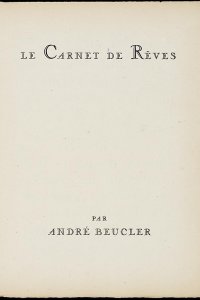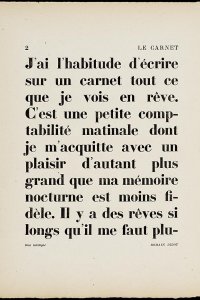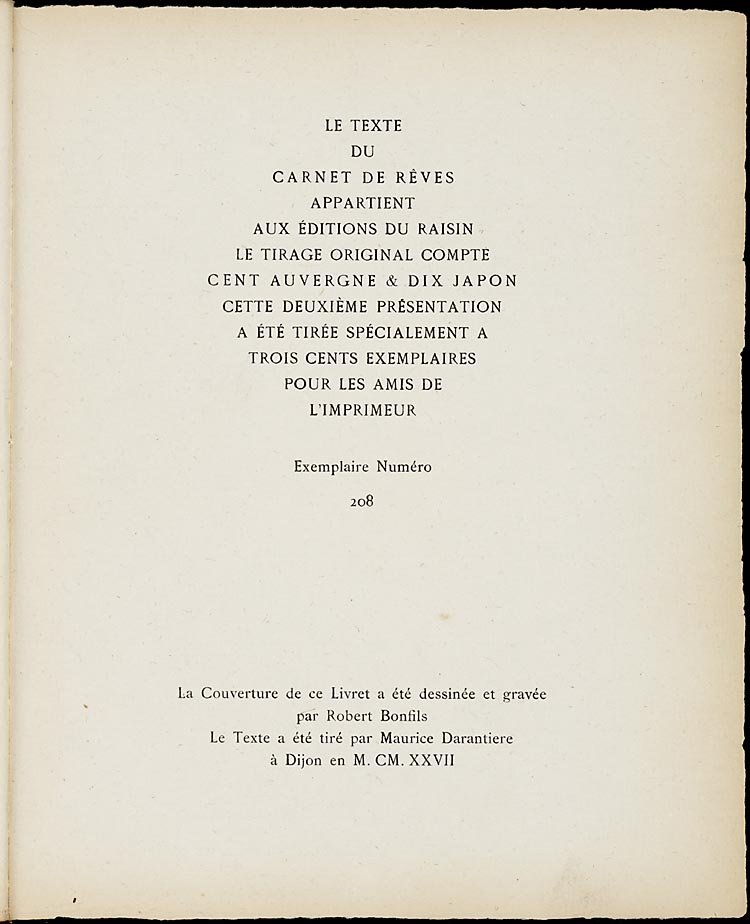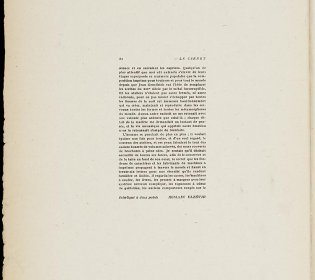Le carnet de rêves
- Year:
- 1927
- Author:
- André Beucler (1898 - 1985)
- Artist:
- Robert Bonfils (1886 - 1972)
It is unusual for a type specimen to use a continuous story. Type specimens are meant to display the type faces and sizes available to the printer, so the customer can make the right choice for the text he wants to have printed. Sometimes a standard line of text is used for this, in many cases a fitting text about typography, such as 'Every printer is, besides a producer of printed material, also a salesman after all'. Sometimes a different text is used for each type face and each type fount, as in: 'Diamond POWDER', and examples are provided for the various types of printing work, such as birth announcements. In other cases, the font type face is demonstrated by using the entire alphabet for each individual type fount. But a complete story, told from A to Z, is very rare. The story has been designed specifically for the use of a type specimen, for the second dream describes a visit to a printer.
Bibliographical description
-
Description:
-
Le carnet de rêves / André Beucler ; [couverture dessinée et gravée par Robert Bonfils]. - Deuxième présentation. - [Dijon: Darantiere], 1927. - 83 p. : ill. ; 29 cm
-
1st edition:
-
1926
-
Printer:
-
Darantiere (Dijon)
-
Edition:
-
300 copies
-
This copy:
-
Number 208 of 300 on Auvergne
-
Bibliography:
-
Bénézit 2-518/519 ; Mahé I-255 ; Monod 1518
-
Shelfmark:
-
Koopm A 532
References
- Histoire de l’édition française, Vol. 4. Paris, Promodis, 1986
- Jean-Michel Rabaté, Maurice Darantiere: Les années vingt: bibliographie d'imprimeur. Plombières-lès-Dijon, Ulysse fin de siècle, 1988
- Jean-Michel Rabaté, '"Thank Maurice": a note about Maurice Darantiere', in: Joyce studies annual, (1991), p. 245-251





